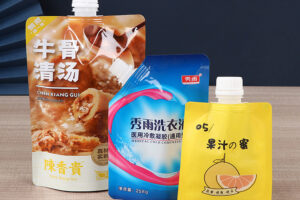Are you struggling to choose the right type of plastic packaging bag for your products? With various options available, it can be challenging to know which type best suits your needs. Understanding the different types of plastic packaging bags and their uses is crucial for making informed decisions that benefit your business and customers.
Plastic packaging bags come in various types, including polyethylene (PE) bags, polypropylene (PP) bags, polyvinyl chloride (PVC) bags, and polyethylene terephthalate (PET) bags. Each type offers unique properties, making them suitable for different applications. By selecting the appropriate plastic packaging bag, you can ensure product safety, durability, and customer satisfaction.
But why should you pay attention to the type of plastic packaging bag you use? The right choice can significantly impact product quality and brand perception.
Why Choose Polyethylene (PE) Bags for Packaging?
Polyethylene (PE) bags are among the most widely used plastic bags. They are known for their versatility, strength, and cost-effectiveness. PE bags come in two main types: high-density polyethylene (HDPE) and low-density polyethylene (LDPE).
PE bags are ideal for grocery bags, food packaging, and retail bags. They offer durability and flexibility, making them suitable for a wide range of applications. HDPE is used for heavy-duty items, while LDPE is preferred for lighter products.
What Makes Polypropylene (PP) Bags Popular?
Polypropylene (PP) bags are known for their clarity, strength, and chemical resistance. They are often used for packaging products that require a high level of protection and visibility.
PP bags are commonly used for snack foods, bakery products, and apparel. They provide excellent transparency and moisture resistance. This makes them ideal for displaying products while keeping them fresh.
How Do Polyvinyl Chloride (PVC) Bags Differ?
Polyvinyl chloride (PVC) bags are known for their strength and durability. These bags are often used for applications requiring a robust material that can withstand tough conditions.
PVC bags are suitable for packaging electronics, toys, and stationery. They offer high durability and protective properties. However, their environmental impact is a consideration, as PVC is not easily recyclable.
Why Use Polyethylene Terephthalate (PET) Bags?
Polyethylene terephthalate (PET) bags are renowned for their excellent barrier properties and clarity. They are often used in the food and beverage industry to preserve freshness and extend shelf life.
PET bags are ideal for beverage bottles, food containers, and pharmaceutical packaging. They provide high barrier protection against moisture and gases. This makes them perfect for sensitive products that require a longer shelf life.
What Are the Environmental Impacts of Plastic Packaging Bags?
The environmental impact of plastic packaging bags is a significant concern. While they offer convenience and protection, they also contribute to pollution and waste. Understanding the environmental implications is crucial for making responsible choices.
Plastic bags contribute to landfill waste and marine pollution. Efforts to recycle and reuse can mitigate some of these impacts. Businesses are encouraged to explore sustainable alternatives and recycling programs to reduce their environmental footprint.
How Can Businesses Transition to More Sustainable Packaging?
Transitioning to more sustainable packaging involves several steps. Businesses need to assess their current packaging practices and explore alternatives that minimize environmental impact.
- Evaluate Current Packaging: Understand the types of plastic bags used and their environmental impact.
- Research Alternatives: Explore sustainable materials such as biodegradable plastics, recycled materials, and compostable options.
- Implement Recycling Programs: Encourage recycling and reuse of plastic bags to reduce waste.
- Educate Consumers: Inform customers about the benefits of sustainable packaging and how they can participate in recycling efforts.
Taking these steps can help businesses transition to more sustainable packaging solutions.
What Are the Benefits of Using Plastic Packaging Bags?
Despite environmental concerns, plastic packaging bags offer several benefits that make them a popular choice in many industries.
Cost-Effectiveness: Plastic bags are generally cheaper to produce than other packaging materials, making them an economical choice for businesses.
Durability: Plastic bags provide excellent durability and protection for a wide range of products. They are resistant to tearing and can withstand harsh conditions.
Versatility: Plastic bags are available in various sizes, shapes, and thicknesses, making them suitable for diverse applications from food packaging to industrial uses.
Lightweight: Plastic bags are lightweight, which reduces shipping costs and makes them easy to transport and store.
How Do Plastic Bags Enhance Product Visibility and Branding?
Plastic packaging bags can be customized to enhance product visibility and branding. Businesses can use custom printing and design to create visually appealing packaging that stands out on the shelves.
Custom printed plastic bags enhance brand recognition and product appeal. They provide an opportunity to display logos, brand colors, and marketing messages. This not only attracts customers but also reinforces brand identity.
What Are the Challenges of Using Plastic Packaging Bags?
While plastic packaging bags offer many benefits, they also come with challenges that businesses need to address.
Environmental Impact: The most significant challenge is the environmental impact. Plastic bags contribute to pollution and waste, which can harm ecosystems.
Regulatory Compliance: Increasing regulations on plastic use require businesses to comply with new standards and restrictions.
Consumer Perception: There is growing consumer demand for sustainable packaging. Businesses need to balance the benefits of plastic with the need to meet consumer expectations for eco-friendly products.
Conclusion
Plastic packaging bags come in various types, each offering unique benefits and applications. Polyethylene, polypropylene, polyvinyl chloride, and polyethylene terephthalate bags provide solutions for different packaging needs. While they offer durability, cost-effectiveness, and versatility, the environmental impact remains a concern. Businesses must weigh the advantages and challenges of plastic bags and consider transitioning to more sustainable options.






